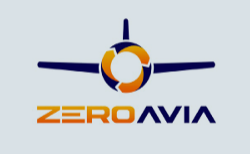Next-Generation Aircraft: American Airlines Invests in Hydrogen and Advanced Technologies for Decarbonization

Originally published in American Airlines' 2023 Sustainability Report
Decarbonizing aviation requires near-term action to improve efficiency and significantly expand the use of SAF, but it also depends on technological advancements that enable next-generation aircraft that can be powered by new types of low- and no-carbon fuel sources. These fuel sources must overcome some key challenges. First, they must contain the energy needed to power aircraft engines that carry our passengers and cargo. Second, they need to be easily distributed to, and carried on, the commercial aircraft that will be coming into service in the next decade. Hydrogen can be a low-carbon source of energy when it is produced using renewable electricity. It offers the potential to play a central role in decarbonizing aviation, but major challenges remain.
How American is helping accelerate solutions
American is helping to catalyze the development of hydrogen-electric propulsion technology — through which hydrogen is used in fuel cells — as well as the future of hydrogen distribution logistics for aviation. We have made two strategic investments in ZeroAvia, a pioneer in hydrogen-electric aviation powertrains. In addition, in 2023 American joined Embraer’s Energia Advisory Group to help define performance and design requirements for its new family of low- and no-emissions aircraft. The Energia aircraft concepts range from nine- to 50-seat capacity and are powered by a mix of electric, hydrogen and hybrid propulsion systems.
American also continues to engage with our aircraft suppliers and other key players in the aviation sector to support the advancement of other next-generation aircraft technologies for reducing emissions.
The Potential
- Nearly three times more energy per unit of weight than jet fuel, from the most abundant substance in the universe
- Produces only water vapor as a byproduct when combusted
- Green hydrogen — produced using renewable energy — is a low-carbon fuel
- Safe and successful track record as a transportation fuel
Actions Needed
- Investment by airframe and engine manufacturers to develop next-generation aircraft powered by hydrogen
- Collaboration among airports, airlines and hydrogen producers to develop infrastructure
- Regulatory approval of hydrogen propulsion and distribution technologies, applications and supportive public policies
The Challenges
- Requires four times more volume on the aircraft than jet fuel, making it difficult to carry sufficient fuel for long-haul flights
- Technical and logistical difficulties delivering to airport and on board aircraft
- Green hydrogen is not currently cost competitive relative to other fuel
Hydrogen electric engines for zero emissions flight
American has teamed up with ZeroAvia to advance development of hydrogen-powered regional jets. ZeroAvia is working to replace traditional engines on existing fixed-wing aircraft with its novel zero-emissions, hydrogen-electric powertrain. The powertrains use green hydrogen, which is stored in tanks and converted to electricity in flight using a fuel cell that then powers the electric motors. The green hydrogen is produced through electrolysis — powered by locally generated renewable energy — and stored at or near airports. The only emission in flight is water vapor.
ZeroAvia is working to retrofit and linefit its powertrains to existing Federal Aviation Administration (FAA)-certified fixed-wing aircraft, which simplifies regulatory issues and reduces time to market. In early 2023, ZeroAvia flew the maiden flight of its 19seat Dornier 228 testbed aircraft, retrofitted with a full-size prototype hydrogen-electric powertrain on the left wing of the aircraft. Since then, it has completed 13 test flights and has an active certification application with the FAA for this powertrain in an aircraft with up to 20 seats.
ZeroAvia’s second engine class, which will ultimately power regional jets, is in active development, with ground testing of electric propulsion systems and advanced fuel cell technologies underway. Ultimately, the company hopes to scale the technology over the next decade to narrow-body aircraft.
In July 2024, American announced its conditional purchase agreement for 100 hydrogen-electric engines, intended to power regional jet aircraft, from ZeroAvia’s powertrain development program.
Advancing Other Critical Next-Gen Aircraft Technologies While hydrogen offers significant potential for decarbonizing aviation over the long term, achieving net zero by 2050 will depend on the development of other nearer-term and more scalable solutions.
American is collaborating with Boeing and NASA as a member of a coalition that is advising the Sustainable Flight Demonstrator project and the development of the X-66A research aircraft. The X-plane is a full-scale demonstrator aircraft with extra-long, thin wings stabilized by diagonal struts, known as a Transonic Truss-Braced Wing concept. When combined with other advancements in propulsion systems, materials and systems architecture, the new design could result in up to 30% less fuel consumption and reduced emissions when compared with today’s best-in-class aircraft.3
In addition, American has invested in Vertical Aerospace Ltd., which is developing an emissions-free electric vertical takeoff and landing (eVTOL) aircraft. In 2023, Vertical made significant progress advancing its work, being one of a few eVTOL developers to have built and flown a full-scale, vectored-thrust electric aircraft. Vertical also opened a state-of-the-art battery facility, which is developing next-generation battery technology for aviation.
Vertical is the only developer to have active certification efforts with five regulators across the world and last year secured the first ever Design Organisation Approval issued to a listed eVTOL manufacturer from the U.K. Civil Aviation Authority. This is a prerequisite for the VX4 aircraft certification, which Vertical is targeting to receive by the end of 2026.
This year Vertical is finalizing the assembly of its more advanced VX4 prototype, which will undergo a robust flight test program.
3 See https://www.nasa.gov/news-release/next-generation-experimental-aircraft-becomes-nasas- newest-x-plane/ for more information.

